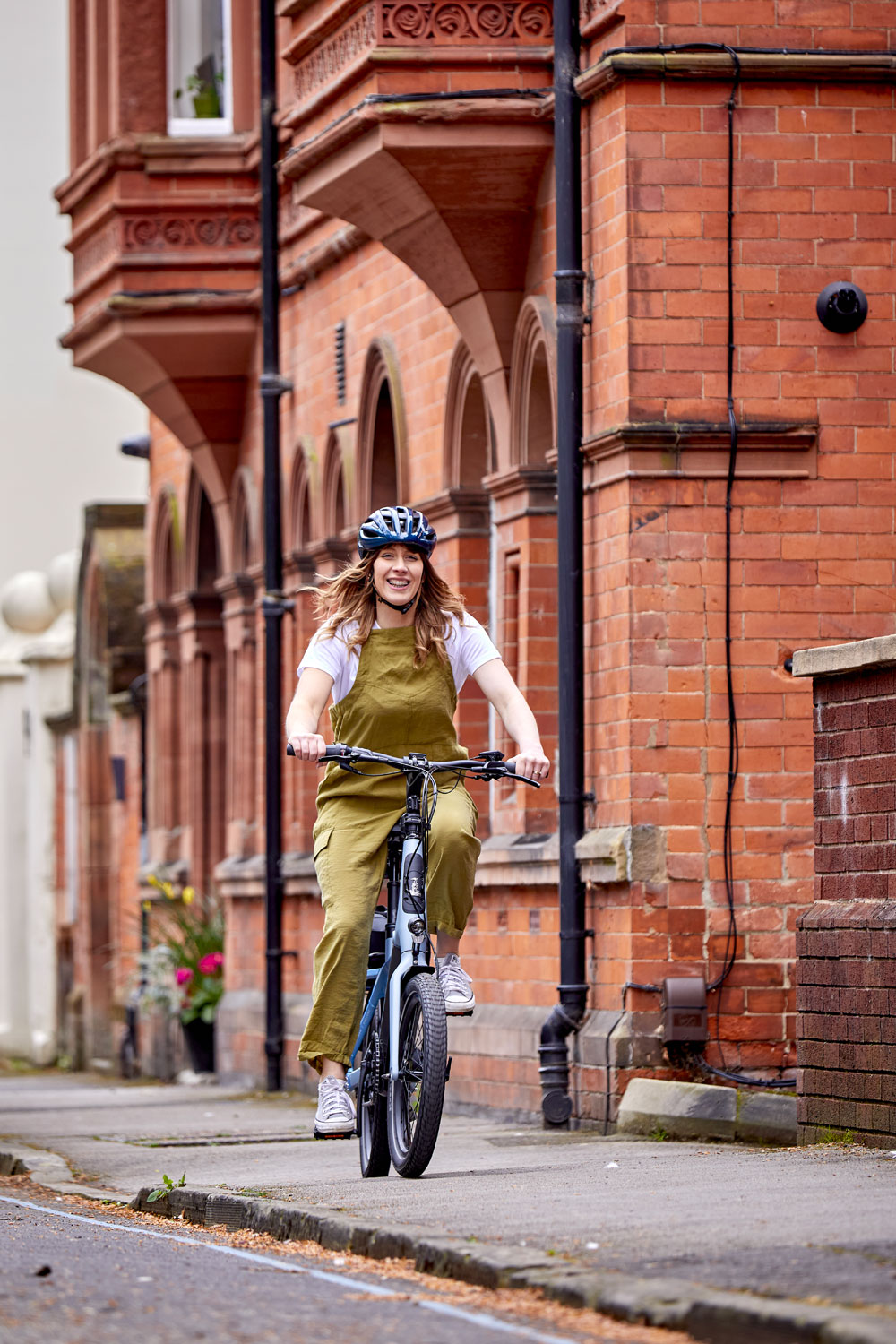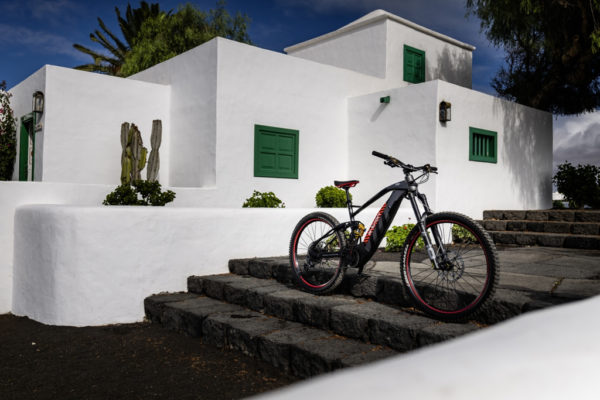
I Tried E-Biking To Work For A Week – Here’s What I Found
By
5 months ago
The tube is so over
The tube has been linked to chronic health conditions, long-term deafness, and, on top of serious health impacts, is often an unpleasant experience, jostling against sweaty strangers. One cycling novice switched out her daily commute for a cycle – made easier with an e-bike. Here’s what happened when Tessa Dunthorne cycled to work for a week.
Tried And Tested: I Cycled To Work For A Week
Living in London, the tube can feel like a necessary evil. It’s usually the most convenient way to get from A to B, but the cost, crowding, and daily humdrum leave a lot to be desired. As more studies reveal concerning possible health impacts – for example, dust exposure being well above safe numbers, exposure to its screeching leading to longer-term deafness which in turn is linked to dementia – I began to wonder lately if there might be a more attractive way to get to work. But cars are definitely out – significantly worse for the environment, they contribute to London’s pollution (and are eyewateringly expensive to run). Which leaves cycling. I decided to swap my usual tube journey for an e-bike commute just for one week, to see how I got on.
Getting Started – A Leap Into The Unknown
As someone who isn’t a regular cyclist, I admit I felt a little daunted. I wasn’t sure if my fitness would be up to scratch – a large reason I opted for an e-bike – and the last time I’d seriously cycled anywhere had been a short-lived stint at university, where I’d quickly realised I didn’t have the glute strength to hit hills.
To embark on the challenge, then, I’d need a serious bike built for city-commuters but with the support of a good motor. I connected with AutoTrader to borrow a Raleigh Modum, a sleek number with a Bosch BES3 system and compact display for tracking speed and battery. It felt reassuringly user-friendly, with handlebars that twisted to reduce the space it took up – vital for fitting it into my building’s shared hallway. Despite these features, however, I was still intimidated by navigating busy city streets.
On the first day, I set off with a cautious optimism, having planned the route the night before. London’s series of cycle superhighways promised exclusive blue lanes tucked away from the bustle of cars; I got to work fine, safe, and – yes – a little smug. I took my helmet to my desk to assert my newfound status as someone who cycles to work; I waxed on about how nice it was to get some fresh air on the way into the office. This all took a bit of a hit when, within ten minutes of my journey back, I managed to drop the bike on myself after dismounting near a narrow gate. Not quite the start I’d imagined: jeans ripped, knee bloodied, and forced to remount and pedal home with only shaky resolve.
I took a few days before remounting the bike. The week after, I returned to the saddle, having run errands on the bike along quieter roads, having let my knee heal up. These were uneventful cycles, and I met a colleague on the journey to and from work to shadow someone with more experience and confidence. This helped significantly as my colleague instinctively knew some things that would’ve taken me many more months to learn: knowing when and how to weave cars; knowing when to dismount and take the traffic lights, and so forth.
After the (staggered) week finished, I felt more road confident and like I’d caught the bug. I’d discovered several things – that cycling was quicker and more consistent than my tube commute, that I could save serious money this way, and that I felt better in my head from particularly the morning journey – but would need to evaluate whether I was keen to personally invest in an e-bike.
Reaping The Benefits: Time & Energy Savings
One of the first things I noticed was the efficiency of my commute. Normally, my tube journey varies from 40 to 55 minutes, depending on delays. The e-bike commute, however, was consistent – about 35 minutes each way. That regularity was refreshing: no more stressing over whether the District line was running. Over the course of a year, those daily time savings could add up to around 26 hours of reclaimed commute time.
Beyond time, I felt I had better clarity during my workdays. There’s something about starting your day outdoors, exposed to the natural light and fresh air, that beats being crammed into a noisy underground carriage where your head is inevitably poking into someone’s armpit. Speaking of noise: research increasingly links prolonged exposure to loud environments with potential hearing damage, which has itself been tied to cognitive health risks like dementia. Just eliminating that stressor gave me surprising peace of mind.

© Roman Koester via Unsplash
Fitness & Environmental Impact
Despite using an e-bike with motor assistance, I typically recorded between 50-100 calories across the course of each commute – which is certainly higher than I’d bank sat on a tube carriage. According to a five-year study of 263,450 UK commuters published in the British Medical Journal, regular cycling is associated with a 41% reduction in the risk of death from any cause, and the incidence of cancer and heart disease dropped by 45% and 46%, respectively. Though an e-bike might not give the same level of fitness as a manual one, it still feels like a solid step in a healthier direction.
In terms of carbon emissions, the switch to e-biking is a win. A typical London underground journey emits about 44g of CO2e/km per passenger, whereas an e-bike emits between 2-5g CO2e/km, based on its charging. For those looking to green their commute, e-biking offers a much lighter footprint than traditional public transport – and even more so than cars, which emit around 187g of CO2e/km.
Considering Cost
Is it cost-effective? That’s trickier to calculate. My monthly total travel costs average around £180 – around £120 of that is work-related. Buying an e-bike outright can be a significant initial investment – Raleigh bikes on AutoTrader are £1,999-2,399 on average – but spreading out payments over a four-year plan would make it more manageable (from £41 a month on the lower end). Given that an e-bike can last 3-10 years, using it as a daily commuter would likely offer savings over time – but only if you’re fully committed to replacing public transport with cycling long-term.
Cycling In London – The Reality
Safety was a mixed bag. Friends who cycle regularly cheered me on, while others, including some family members, shared horror stories of road accidents. To me, the main roads felt safe, with vans and buses generally respecting space. However, other cyclists posed unexpected hazards, cutting dangerously close or weaving between stationary traffic – often with earphones in and seemingly no care in the world. The cycle lanes, too, were a bit hit-or-miss. At one point, I saw a van accidentally knock a dividing post into the cycle lane – a small incident, but enough to rattle my nerves. Then there’s the issue of theft. E-bikes are attractive to would-be thieves, so a reliable lock is a must. I used a sturdy lock from Decathlon that gave me peace of mind when leaving the bike unattended, but the risk always lingered.
Will I Keep It Up?
Although I enjoyed the experiment, I haven’t rushed to purchase an e-bike – yet. Winter’s shorter days make evening rides less appealing, so it might be spring before I give cycling another look-in, especially as a cyclist with limited experience. And then? Perhaps I will purchase an e-bike, as an investment into my health and to, in the long term, save money on my commute.
Tessa cycled to work on a Raleigh Modum via AutoTrader (autotrader.co.uk), which now sells new e-bikes via its online marketplace. The Raleigh Modum is a compact, urban e-bike equipped with a Bosch BES3 motor and includes a 500Wh battery, £3,399.






